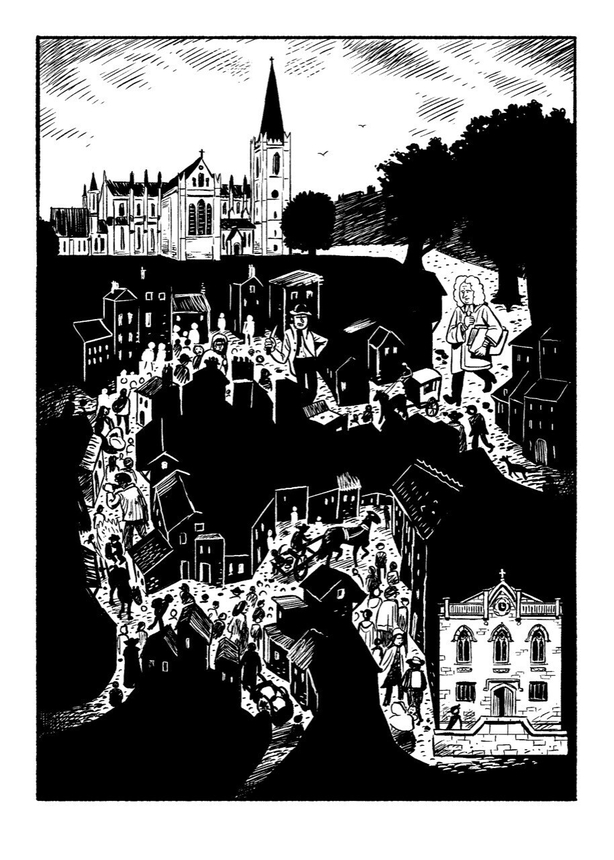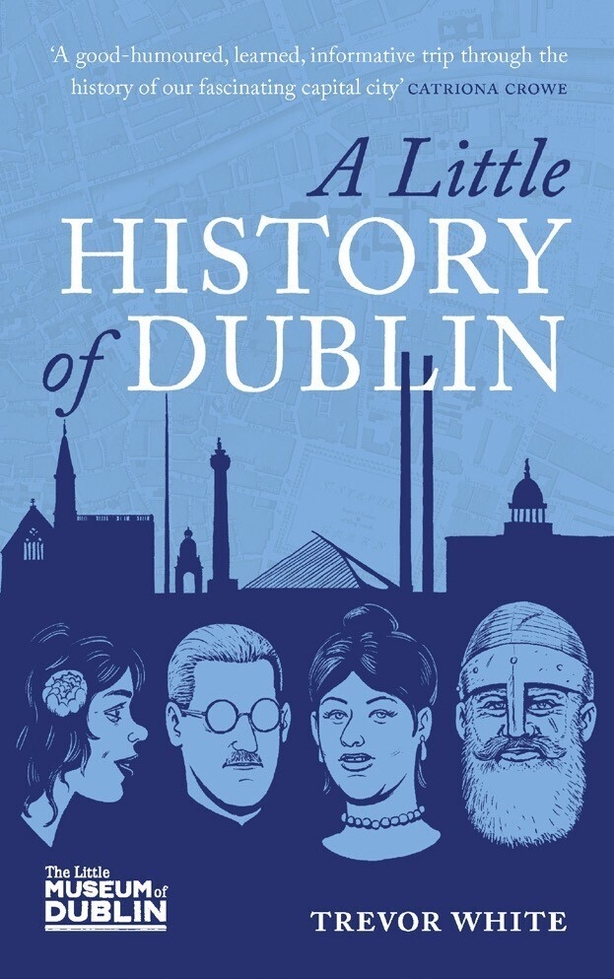As attention spans continue to dwindle, readers clamour for ever-shorter summaries of vast subjects.
Below, Trevor White, the author of A Little History of Dublin, makes an art form of brevity... Can the story of Dublin be told in a tweet?
The greatest historian of Dublin, Sir John T. Gilbert, required three volumes to tell the story of the Irish capital. In his long, rolling prose style, Gilbert reminds us that history is complex and multivarious, there are always good reasons for complicating the narrative, and pieties are unhelpful when it comes to understanding what the present felt like in the past. But scholars also have an obligation to make history legible. Put simply, you cannot teach a sleeping child.
Gilbert favoured big words and sonata-length sentences. The demands of the present are more concise. It is brevity that defines this challenge. In the mass-impatience of the social media moment, the question asks itself. Can you tell the story of Dublin in a tweet?
It is certainly possible to capture the shape of history in just a few sentences. Long before the digital age, Christine Longford summarised Dublin in forty-three words: 'Dublin is a city of contradictions and survivals,' she wrote. ‘Its biography is not the history of Ireland. Its character has been developed by successive invasions, by prosperity in the eighteenth century and decay in the nineteenth, and by political independence at the present day.’

But this is a lot of words. Let’s raise the stakes by bringing the number right down. For the architectural historian Christine Casey, the story of the built fabric can be summarised in just three themes: river, rivalry and revolt.
In an interview before his death in 2023, the publisher Fergal Tobin also chose three themes:
-
Religion: ‘The failure of the reformation was very unusual in the European context, in that the king could not make his writ run here ... Irish Catholicism got away with it.’
-
Distance: ‘Dublin is farther away from the centre of British power than we think. London has always been looking across the Channel. As the crow flies, Charing Cross is closer to Amsterdam or Brussels.’
-
Class: ‘Once the Gaelic lords were defeated at the Battle of Kinsale, and the old English, the Hiberno- Norman descendants, who remained Catholic at the Reformation, once they were defeated at the Boyne and Aughrim, Ireland had no domestic ruling class. The fabled Ascendancy didn’t do their job after the Act of Union. There was a huge vacuum of social leadership.’
For the scholar Kevin Whelan, the magic number is not three but four. In Whelan’s summary of all that history, there are four little pigs. As he explained in a Gilbert Lecture for Dublin City Council:
"We all know the story of the three little pigs. I’ve got four little pigs this evening. And it’s about the city of Dublin as being a city of wood, then a city of brick, a city of words, and finally, I want to talk about it as a silicon city. So my four little Dublin pigs are wood, brick, words and silicon."
Whelan argues that silicon enabled the transformation of the Grand Canal Docks: as a result, Dublin is now home to the European headquarters of Facebook, LinkedIn and Google. The leading historian of Dublin in the modern age, David Dickson, contextualises the same information by noting the role played by a few individuals. He reminds us that it was the persistence of one government executive, Dermot Tuohy, that resulted in Google’s choice of Dublin for the company’s European headquarters in 2002. ‘From Diarmuid MacMurrough inviting the Normans to Dermot Tuohy chasing Google, individuals can sometimes change the course of history.’

For his contribution to this cause, Dublin Corporation presented the Dean of
St Patrick's Cathedral with the freedom of the city.
One of the exciting things about history today is the way dominant narratives are being reassessed, prompting new insights. David Dickson’s emphasis on individual agency is compelling, while an economic historian might add that being rich or poor is the major determinant in Irish history, or a sociologist might look to the conversation between new and old Dubliners, and how that changes in response to the stuttering success of the colonial project.
These great scholars have all broadened our understanding of the past. My new book about the city is no doorstop history, indeed the story unfolds at an average speed of 6.4 years per page. It is clearly a book for the generalist, then, and not for the academic, but even my narrative may prove too slow for some modern readers. So how would I summarise the length and breadth of Baile Atha Cliath?
If the function of this parlour game is to capture the shape and form in a few sentences – let us agree to disagree on three themes – one might begin by saying that the Irish capital is an only child; continue by admitting that its people are related to everyone; and finish with the irrefutable tweet that books are the family business.
-
Dublin is an only child.
It has no full siblings. Even today, after a century of independence, it is not really an English city, but it’s not not like the country it represents, either. No one looks up to Dublin. -
The people are related to everyone.
In a melting pot that is also a place of refuge, many people have roots elsewhere, be it Scandinavia, Britain, America, Poland, France, Ukraine or Africa. Dubs are mongrels. Even the ‘locals’ have one foot in the country. -
Books are the family business.
It is weird that a small city should produce three Nobel Laureates in Literature. Dublin is properly famed for its conversation and, in turn, its writing. That heritage encourages authors to dissect the longings of the heart in every age.
Of course, this is only a parlour game. You might argue that the same things could be said of countless other cities, or that the story of Dublin is different for reasons that are not mentioned in this article. That’s okay. I plead guilty to cherry picking. But I also submit that reflecting on the shape of the past might better enable us to construct the future. Perhaps it is time to write your own list?

Trevor White is the author of A Little History of Dublin, published by Merrion Press

